Thailand’s Escoffier – Chef McDang Defines Thai Cuisine
Today we are honored to post our long overdue interview of Chef McDang, who is perhaps Thailand’s most famous and outspoken chef. Actively involved in teaching The Principles of Thai Cookery, he is currently a cooking instructor at Le Cordon Bleu College of Culinary Art. Chef has appeared with Gordon Ramsay, Anthony Bourdain and also in Bravo TV’s Around the World in 80 Plates. Temple of Thai talks to the Chef about his self-published Thai cuisine cookbook, The Principles of Thai Cookery, written as a quest to define and explain the true Thai flavor profile to the world. This unique Thai cookbook covers the history of Thai cuisine, and explains why Thai food tastes the way it does and why it’s cooked the way it is.
Interview with Chef McDang
Temple: Chef, what was your inspiration for writing your first English language cookbook, The Principles of Thai Cookery?
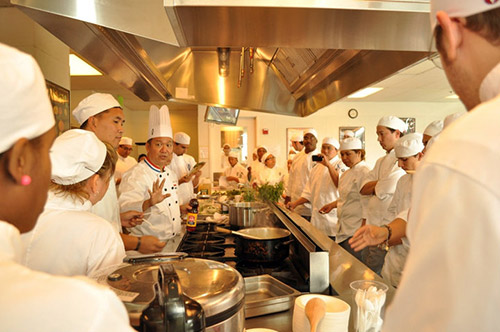
Chef McDang: Unfortunately this short question requires a pretty looong answer….
After teaching 3 years at Le Cordon Bleu Schools (LCB) in the past, I learned a great deal about Thai cuisine from the questions asked by my students. This in combination with all the chefs’ encouragement from each school, especially LCB Las Vegas to write about Thai cuisine was an important influence to the creation of the book. Then some time, 6 or 7 seven years ago, I was asked by Thailand’s Foreign Office to teach The Principles of Thai Cookery at Le Cordon Bleu schools in the US. Simply said, this book came out of year in & year out lecture series at Le Cordon Bleu Schools…
The quick answer is that The Principles of Thai Cookery was notes from my lecture series as I wanted to introduce this kind of formal culinary thought to Thai cuisine and apply a systematized guide of rules to it. Although it was the feeling that with all Escoffier’s efforts of giving structure and history to the teaching of French cuisine, this sort of culinary appraisal has yet to be fully appreciated with others. Despite this sort of thought it was only later that food science became an integral part of the learning of cookery. (This may be due to the fact that the food industry has grown a great deal and when you cook on an industrial bases, food science is very important. However, in my opinion, it should have been important right from the beginning.)
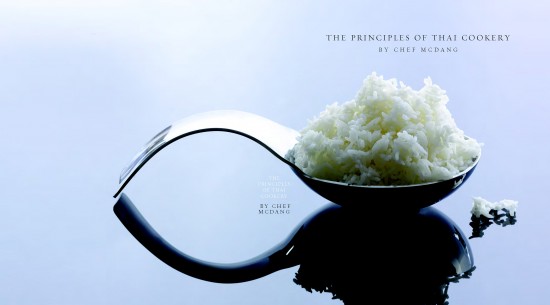
Then, additional encouragement came in form of Chef David Thompson’s book Thai Food (you remember the pink one), which bothered and also steered me forward since I felt a Thai should be writing this book. Therefore, without being boastful, I figured I should probably do something about it as I am fortunate enough to have the proper credentials and food education to write a guide book about Thai cuisine. So I took my training from the Culinary Institute of America (where I was taught the Western way to understand cuisine and to think and approach cookery with structure, history, and applied food science) and made the Principles of Thai Cookery in order to attempt to provide my national food with structure, historical facts (development & influence of Thai cuisine by outside influences) and applied food science. It still pains me though that there are those of the general public, Thais and Westerners alike, that don’t know the Thai food structure or profile. They still think that noodle soup (Guie Tiew) or chicken and rice are Thai (they’re actually dishes derived from China).
Temple: How did your experience growing up as part of the Thai royal family change your experience of Thai food? How do you think your experience was different from that of other people in Thailand?
Chef McDang: Well I certainly ate well, haha…
It was a very varied kind of food, yet there is a misconception in Thailand amongst the Thai and Western public that cuisine in the palace is very different from the ordinary man’s cuisine – it is not. The only difference is that in Royal Thai Cuisine only the best available ingredients are used. Also, there are no extremes in terms of flavor, heat, etc. as there has to be a balance in terms of the flavor for Royal Thai Cuisine. Then, there are certain no’s in Royal Thai Cuisine: no bones, pits, or stones. Additionally, everything (i.e. fruits and vegetables) is peeled and carved.
Aside from those things, with royal dining you must know that the Royals do not eat family-style. When we are seated at the dining room table Her Majesty the Queen Rambhai, my great aunt, was served the same stuff that we ate except she had her own set of plates and ingredients for her meal. Even her rice is cooked in an earthenware crock only for her.
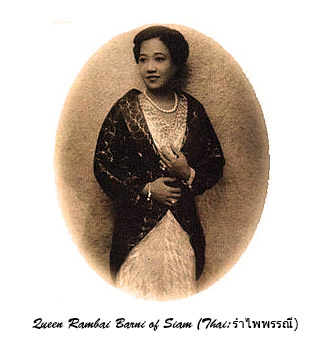
So that is the difference. Royal Thai Cuisine as professed by all Thai restaurants is merely a marketing ploy to elevate the price of Thai food served in Royal Thai Cuisine restaurants. There are some recipes that came and originated from the palace such as the summer meal called Kao Chea, which came from the palace during the reign of King Rama II (reign: 1809-1824). Apart from that, throughout Thai history, new dishes and inventions and new cooking techniques in terms of Thai cuisine originated primarily from the capital (the Palace) because this is the first contact point that foreign influences will have on Thai cuisine. It was not until the Chinese migrated to Thailand around 200 years ago that new Thai-Chinese dishes were created from the bottom up as it were.
Temple: How did living abroad shape your appreciation of Thai food? And what makes Thai food different from other cuisines?
Chef McDang: Living abroad in England, US, and France, along with my travels through Europe made me realize that the food of other countries, except for the French, are pretty bland. Thai food is unique in that in combines many flavors not usually done in other cuisines. Likewise, it is not heavy, and it is very healthy. The difference between an Indian curry and Thai curry can easily explain the appealing aspect of Thai cuisine. Thai curry is made primarily with a curry paste which consists of fresh ingredients pounded together to make a paste. Indian curry also has this paste which is then cooked up in fat to make a base for the curry (when you fry powder or ingredients with fat, in culinary terms, this is a thickening agent called a roux). Thai curry has no such roux. Once this roux is added with liquid, the curry becomes heavy, starchy, and most difficult to digest. Indian curries further differ as the majority of the herbs and spices used in their pastes are dry.
Temple: For readers who haven’t read your book, can you explain the concept of a flavor profile, and why it is important? For instance, what makes up the Thai flavor profile?
Chef McDang: It is the set of rules within the culinary design of a geographic location governed by a timeline of culinary cooking techniques, ingredients, and influences. I hope that covers a good explanation to convey the correct idea. I think I wrote in my website of what constitutes the Thai flavor profile as there are certain rules that govern Thai cuisine:
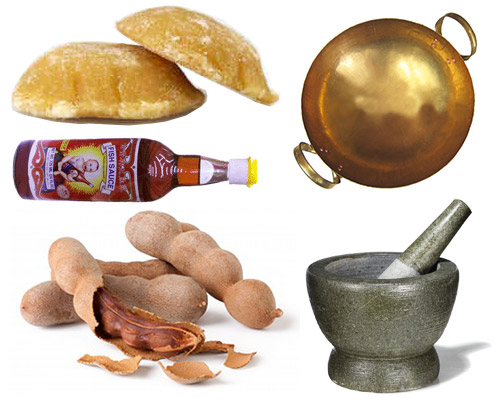
- In savory dishes we salt our food with fish sauce making it the primary source of saltiness
- Sweetness comes from palm sugar – not granulated sugar or honey
- Sourness comes from sour tropical fruits – e.g. tamarind, lime, water olives (makok), green unripe mango
- Oil used in Thai cuisine doesn’t have smell – before vegetable oil was introduced, we used lard for stir frying and deep fat frying. This cooking technique did not come to Thailand until 230 years ago when the Chinese brought the wok to Thailand.
- You cannot make traditional Thai food without using a pestle and mortar to make a paste – and there are 9 essential ingredients listed in the cookbook called the Nine Essentials which are used to make a paste for marinades, stir frying, and curry. Note, you don’t necessarily use all nine of them in your pastes.
- There is an exception to the previous rule when making an infusion soup. This means that you take herbs and fresh spice and infuse them into boiling water such as Thom yum, and Tom Kah, etc.
- The flavor profile of Thai food should be applied to the 3 primary flavors your tongue can taste. Sweet, sour, and salty and you know where those come from above.
- Thai salad dressing has no oil – fragrant or not. Usually the flavor of Thai salad dressing is a balance of the 3 aforementioned flavors with exception of certain regional salads, papaya salad (from Northeast Isaan) has no sugar, Larb (which is a warm salad from Issan as well) has no sugar, etc.
Temple: People in many countries seem to be losing interest in traditional foods. Do you think Thailand is experiencing the same thing? Why or why not?
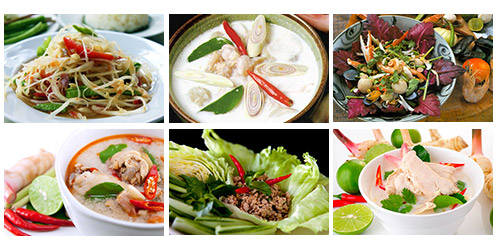
Chef McDang: I don’t think Thais are losing interest in traditional food. You can still get traditional foods in homes outside and inside Bangkok. The problem is not losing interest, the problem is the ways Thai approach our cuisine. No one has ever written a book that gives you a guideline of the structure of our food and since the beginning of time Thai cuisine has been taught by rote learning. Memorization doesn’t promote understanding. So we are complaining that our cuisine is being lost yet we haven’t formulated a structure to understand our cuisine let alone the history. Once we understand the food, then we can take recipes our great grandmothers have handed us and we can logically understand it and recreate it. One last thing, Thais don’t even know what is traditional Thai food and what is traditional Chinese food, we need to be aware of that.
Temple: What are some solutions to this problem?
Chef McDang: Listed above. More culinary education is needed. If people are truly worried about anything, in this case food, then they should study it and be informed.
Temple: What is the huge international appeal of Thai food? And how can the international attention paid to Thai food help Thailand?
Chef McDang: To begin, the international appeal is that you are what you eat. I think Thai food represents the best of the Thai nation. We are spicy, sweet, sour, hot, and we have a food culture that goes back hundreds of years.
Correct understanding of Thai food and ingredients should be promoted in order to promote international attention. Our eating culture should be promoted because our cuisine and what we eat is basically what we offer to our customers around the world – our culture. It would entice them to come visit Thailand and immerse into our culture and history because Thailand doesn’t only have Patpong (beach resort). We have more to offer the world from our eating culture. This would also promote export of Thai ingredients. I think the Ministry of Thailand, commerce, and agriculture has a major role to play in these areas. The first is to export quality Thai products to the rest of the world, especially (certain) fresh herbs and spices which you can’t get anywhere else in the world. The second is, the Ministry of Agriculture has to teach Thai farmers to conform to international growing standards in terms of insecticides and organic vegetables and herbs rather than thinking of money in the short run (as in the case of halting exports to Europe as a recent case sample).
Temple: Do you think that the style of Thai “fusion” food is a good thing or a bad thing for Thai cuisine? Can you make “fusion” food in a style that is still somehow authentically Thai?
Chef McDang: Most Thai fusion food becomes confusion food. Because Western chefs and even Thai chefs don’t understand the profile of Thai cuisine. However, what is fusion food? Is it cuisine that uses foreign ingredients combined with the Thai profile or is it the Western food profile using Thai ingredients. There seems to be confusion here as I have been presented the latter and informed, to my dismay, that it was Thai.
Temple: What would be your ideal way to educate the public (Thai and foreign) about what makes authentic Thai food?
Chef McDang: My book is just the first step in doing that, although, it would be great if I could go around the world, lecture, do food demos and workshops, and preach the goodness and the structure of Thai cuisine. Once Western chefs, and Thai chefs around the world as well, get the basic knowledge and understand it, then new areas and recipes that maintain the Thai profile will come up and will be a great inspiration to me. Yet, this can’t be done without understanding and knowing about what Thai food is first.
It is easier for me to educate Western chefs about Thai cuisine and authentic Thai cuisine since culinary education is more available in the West and the culture is more open to being taught on matters of food. However, unfortunately in Thailand I’m afraid to say that I have been fighting a losing battle. There is a negative stigma in our culture where we cannot seem to come together and go in the same direction for a common cause. At least it seems that way for me in the culinary field but I’m trying.
Testing the Principles of Thai Cookery
 See our earlier blog post, where we try out some of the recipes from The Principles of Thai Cookery cookbook. Find out why Chef McDang is so controversial in his CNN Go article, Thais don’t give a damn about Thai food.
See our earlier blog post, where we try out some of the recipes from The Principles of Thai Cookery cookbook. Find out why Chef McDang is so controversial in his CNN Go article, Thais don’t give a damn about Thai food.
Image Copyright: Tom Yum Gai Image © Sarun Tanomsak/123RF.com; Tom Kha Gai Image Copyright © chorboon_photo 2009, used under license from Shutterstock.com; Yam Talay Image Copyright © 2000 Sompon and Elizabeth Nabnian; Papaya Salad Image Copyright © 2010 Temple of Thai; Laab Gai Image © 2010, laughingmango/iStockphoto.com

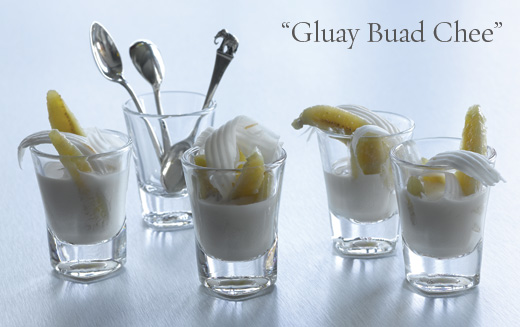
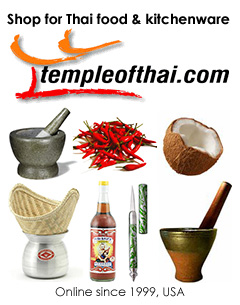


No Comments on "Thailand’s Escoffier – Chef McDang Defines Thai Cuisine"